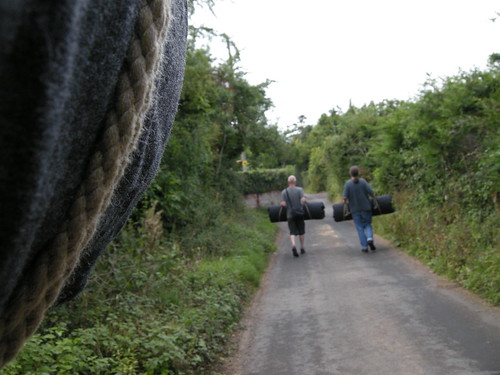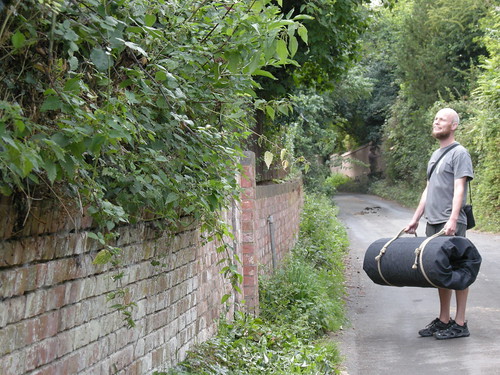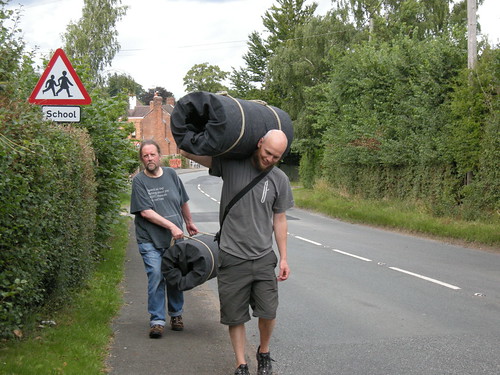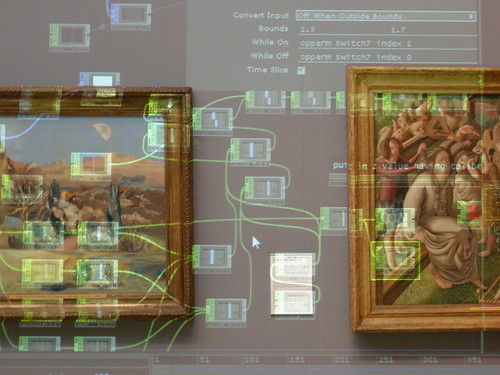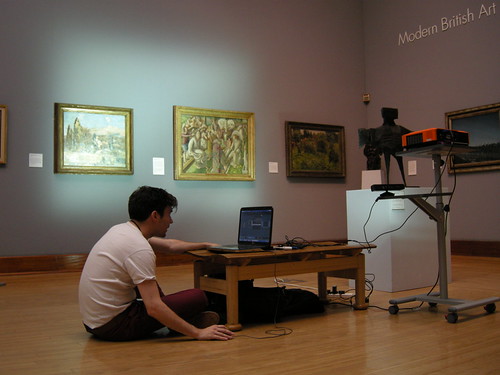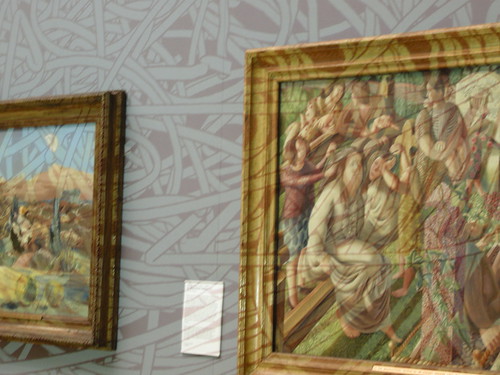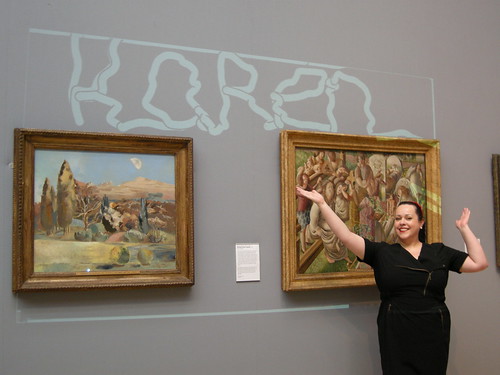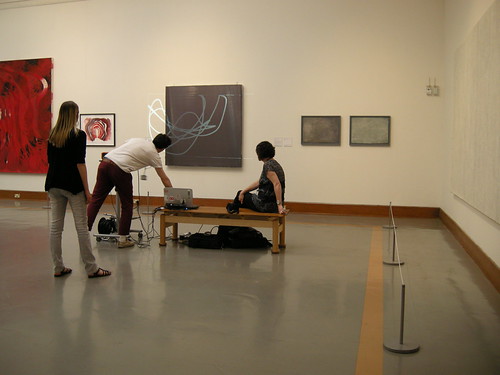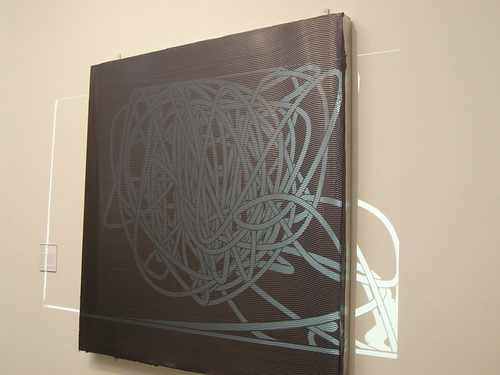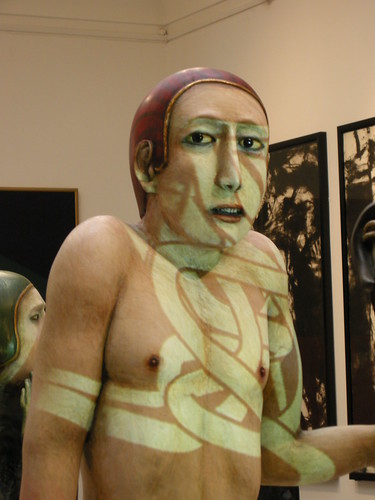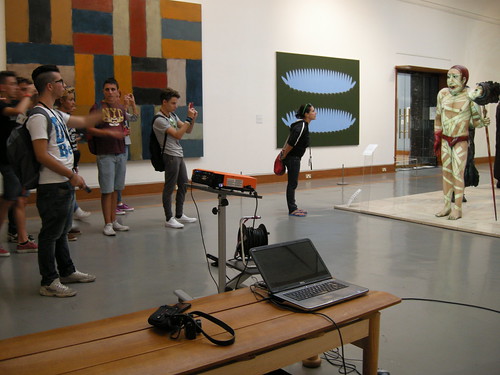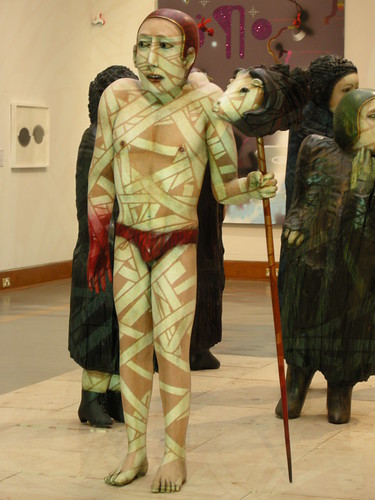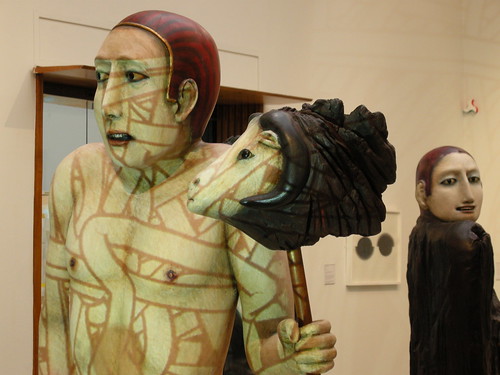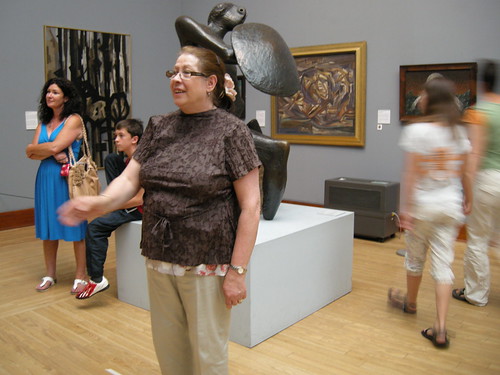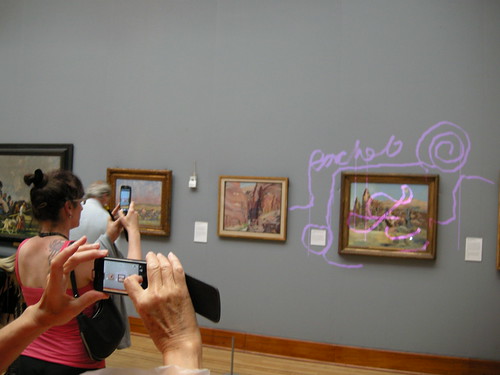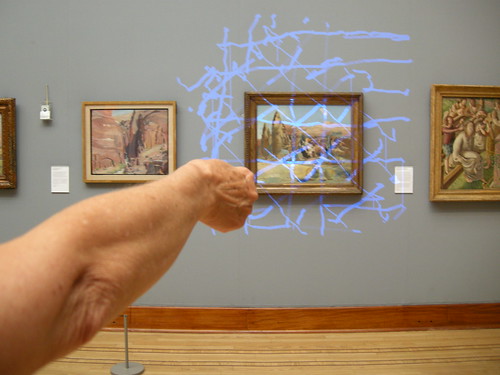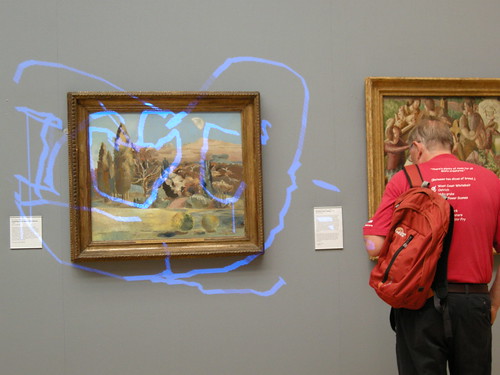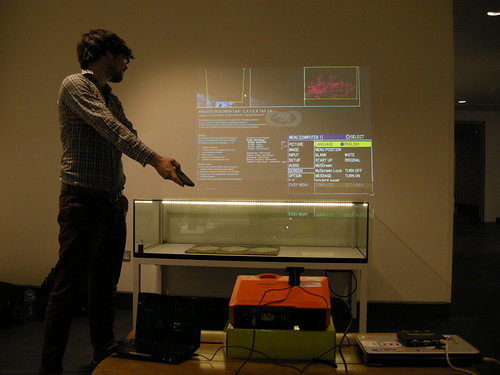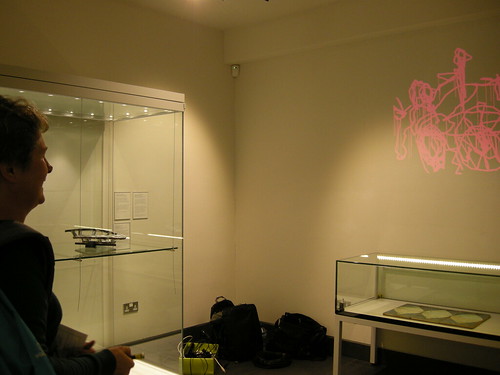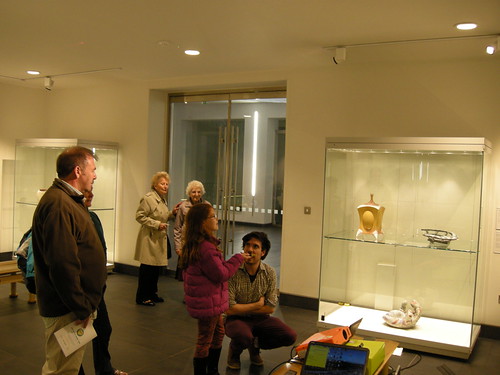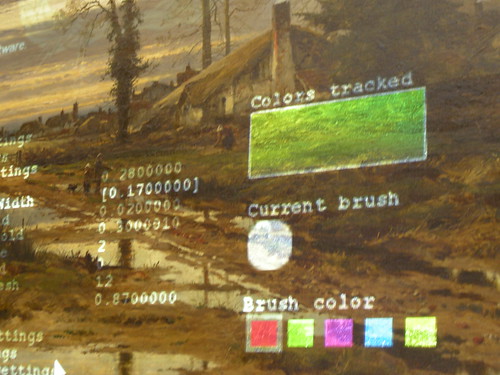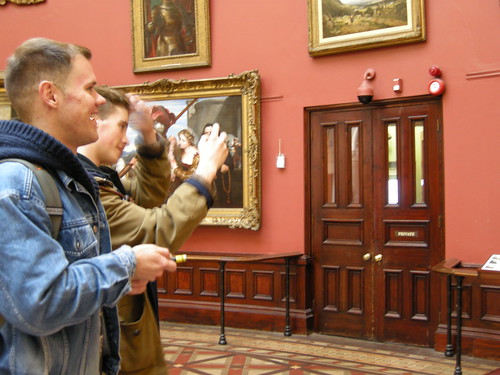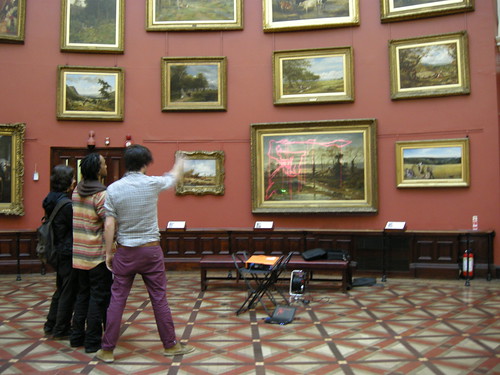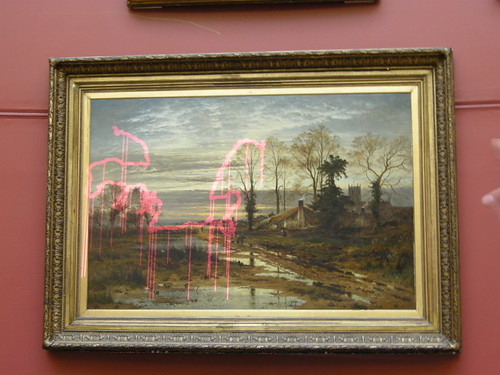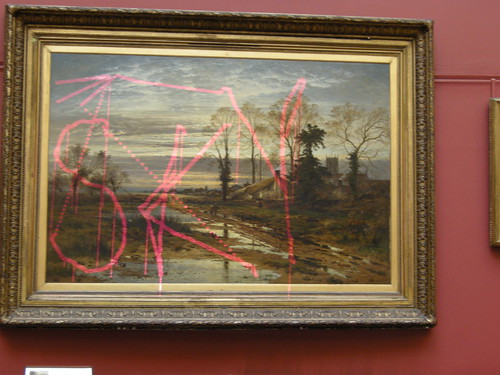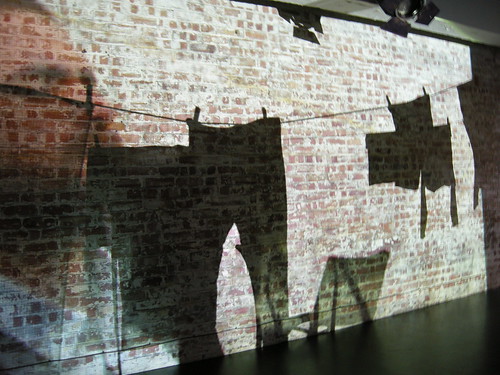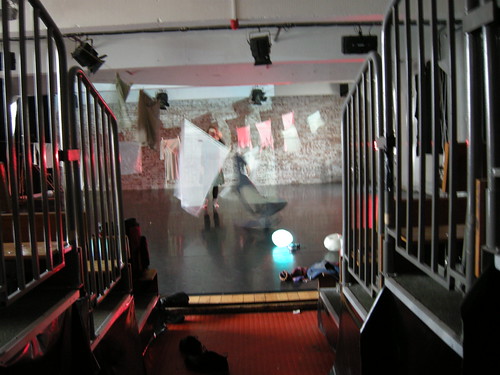Last week we had our second playtesting day for the Inkvisible project. (Here’s the write-up of the first one.) This time I was at BMAG with Dr Gretchen Larsen, our King’s College academic.

With or without a PhD, we all start in the same way!
After struggling to get the L.A.S.E.R. Tag software we’re using to track our green laser pointer in the orange space of the Buddha Gallery, I’d bought a purple laser pointer to try out. In parallel to this, we’d also been talking to a BMAG conservator to ensure our lasers aren’t doing any damage.
It turns out there’s not a lot of published research regarding the use of laser pointers for drawing graffiti within the museum environment!
The conservator is going to do some calculations and research into fluence and intensity, and whilst we think we’re a long way off the sorts of powers, spot sizes or exposure times that would be needed to do any damage, we’re making sure we err on the side of caution.
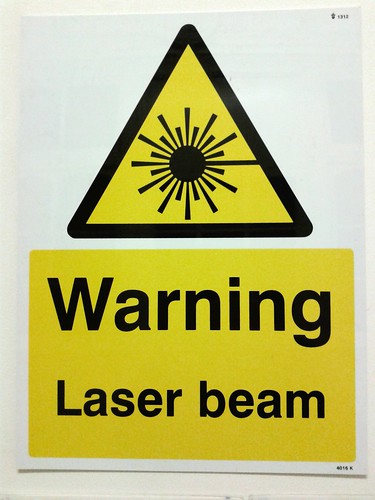
This means that we will restrict the use of our green lasers to glazed oil paintings (framed behind glass), ceramics and sculptures, and our purple laser (with its shorter wavelength and increased likelihood of generating ultra violet radiation) to only ceramics and sculptures. Fortunately the area in the Buddha Gallery we were interested in using contains stone and bronze statues.

We’re interested in this particular gallery partly because of its links to a community that come to leave devotional offerings and partly because of the overlooking balcony that means we can potentially project down into the space.
This affordance of being able to have all the technology up out of sight seemed to have a distinct effect on the interactions with museum visitors. In contrast to when we had the projector and laptop out in plain view and people readily came up to ask us what we were doing, here the mechanics were somewhat hidden and people tended to stay back to watch from a distance. We could still hear the appreciative exclamations, but it was almost as if when the workings are visible they act as an invitation for people to come up and ask what’s happening and how it works.
We’re also wondering if this effect is related to how many people are with the laser – if it’s just one, do visitors feel they need to leave them alone to do whatever it is they’re concentrating on?
Whilst the invitation seemed to have been removed, it was replaced with more of a sense of magic. “Is it real?”, one man was heard to say.
Something else was to become apparent too: the big bronze statue of Buddha didn’t like the laser!
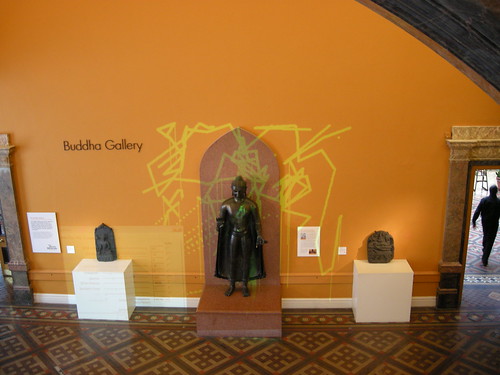
The above image might look like a lot of indiscriminate scribbling, but it’s us trying to figure out why the projected graffiti would stop as the laser passed over the statue. With a bit of tweaking of the software settings, we managed to get the laser to track over the (basalt, I think) surround, however we could not directly draw any traces over the statue itself. (Only drips or traces that were offset due to tracking misalignment.) We think this was because of the reflective relief metallic surface bouncing the laser off in all sorts of directions therefore making it invisible to the tracking camera.
The result was really quite eerie and added to the feeling of transgression.
The same thing happened when we tried the statue of Lucifer in the Round Room.
Our next stop was one of the Pre-Raphaelite galleries. Having had a wander around the museum we felt that Inkvisible would work best in the more traditional galleries: the new history galleries for example are lovely and spiffy, but our stuff would just look too normal in them, it would disappear.
The Pre-Raphaelite collection at BMAG is renowned and attracts a lot of visitors expecting a particular kind of museum experience. We deliberately sited ourselves here to get a feel for what sort of responses disrupting that would produce.
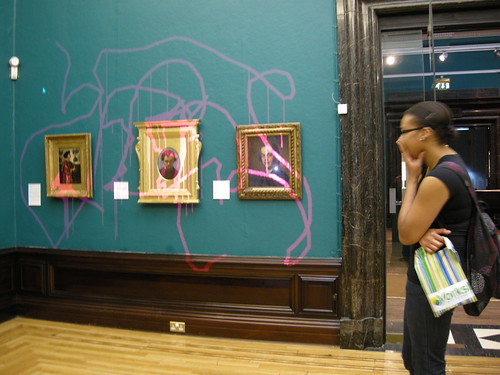
This was our first interaction: a woman who was drawn to it as if to a car crash. She was horrified at the prospect of having marked over the paintings, but couldn’t tear herself away. Result.

Not long afterwards we were descended upon by a series of groups of school children. Rising to the challenge we invited them to take part, giving as many of them a go as we were able to.
This was good learning for us as up until now we had only dealt with participants in twos or threes. Instigating countdowns to mark the end of turns and designating a Special Assistant to help with clearing the screen, we kept groups of about 10 7-year-olds engaged at a time.
Chatting to them between changeovers it was interesting to explore the extent to which they had already been trained in ‘appropriate’ museum behaviour. They enjoyed the opportunity to draw all over the walls and to not get into serious/expensive trouble!
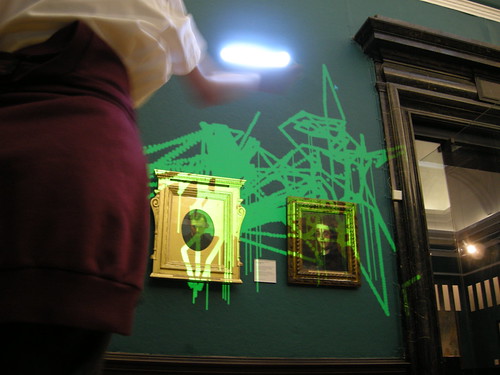
We were a bit nervous about handing over some Class 2 lasers to some excited small children, so for the most part we used an alternative method. Rather than tracking laser light reflected off of the walls and paintings, here we used a torch held so it pointed straight back towards the camera.
This had obvious advantages in terms of safety for both the artefacts and the participants, but it lacks something in the feedback for your movements that you get with the laser pointer unless you are right up close to the projection surface.
I like this a lot – it’s a very different experience when you can see the brush marks on the surface you are graffiti-ing over and this method also encourages you to move your (whole) body in a different way. We got some of the groups to try jumping and making marks as high as they could.
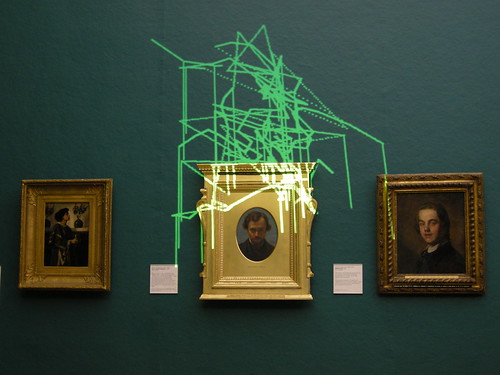
Struggling a bit with the lack of correlation between movement and mark, also with the tracking system not being able to keep up with very fast movements, we switched back to the laser pointer method with some of the later groups.
Here it was very apparent that the children would treat the area of wall above the paintings as their canvas, avoiding the artworks below unless they were specifically encouraged to work lower down.
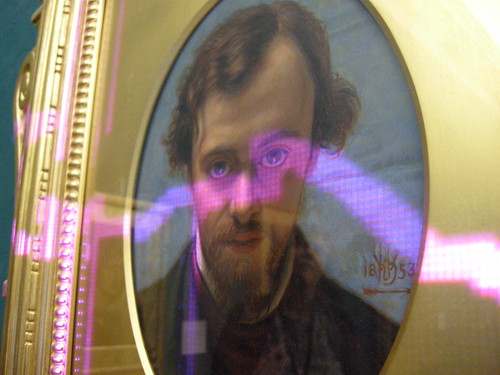
After the school groups had all got on their respective coaches, we were paid a few visits by chaps from the Digital Heritage Demonstrator project. One of the comments was “I bet everyone draws lines across the eyes straight away”. Well, er, no, actually. Nobody had! It was interesting to think about what people assumed would be the obvious first thing to do.
We’ll be running a public event on the 26th of July where you can come and do some mark-making of your own.
What will you do?


